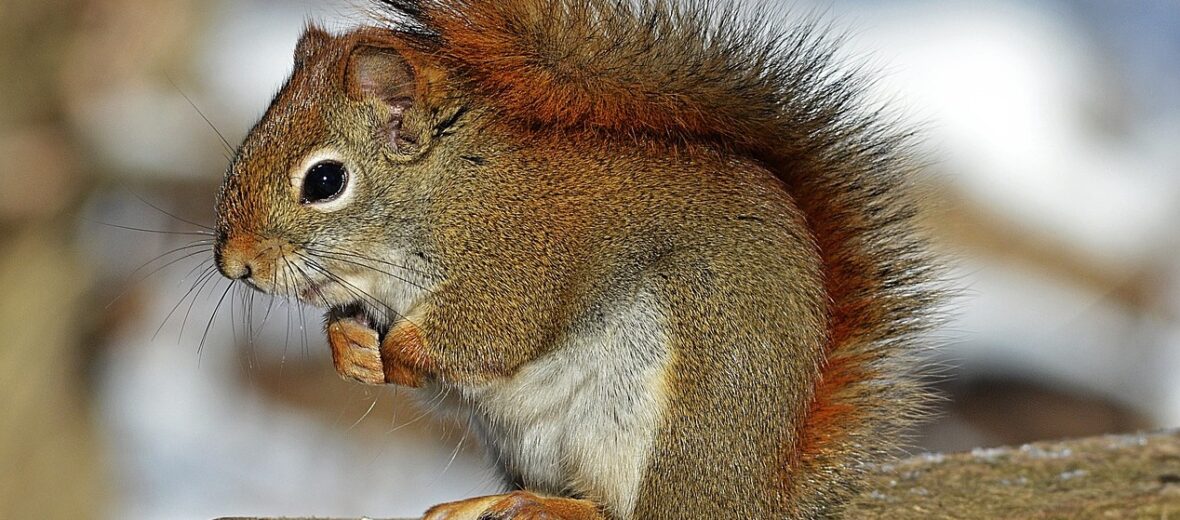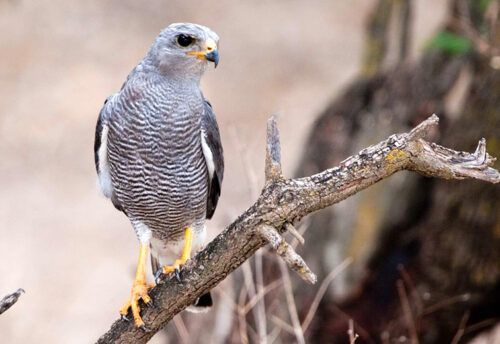
Stemming from the Greek name “shadow tail” it’s the squirrel. There are approximately 280 known species of squirrels in the world. These cute critters are thieves, speedy and nimble acrobats, gardeners, and tricky enough to make even Loki proud. Some squirrels can even glide up to 300 feet from tree to tree (check out my articles on flying squirrels)! Squirrels are wild animals but can quickly become fearless of humans if frequently fed. Some people even keep them as pets. But try not to feed wild squirrels as it tends to cause a population boom due to the assumption that food will be readily available, when it isn’t always. Squirrels can be found on every continent except Australia and Antarctica.
First the Stats…
Scientific name: Sciuridae
Weight: Up to 1.3 lbs.
Length: Up to 12+ inches, plus up to a 12+ inch tail
Lifespan: Up to 10 years
Now on to the Facts!
1.) A squirrel’s hind ankles are able to rotate 180°! This helps them hang on to trees and navigate through branches easily.
2.) These little critters have 4 fingers on their fore limbs and 5 toes on their hind limbs.
3.) They are able to locate food buried under a foot of snow! This is a handy trait in the cold winter months.
4.) Squirrels are known for hiding multiple caches of nuts and seeds. However, they often lose track of all their hiding places. These hidden stashes provide free food for other animals and fellow thieving squirrels. They typically lose up to 25% of the food they collect. ADHD much?
5.) The word “rodent” actually comes from the Latin word “rodere,” which means to gnaw.
But wait, there’s more on the squirrel!
6.) Not only are their forgotten caches thieved by neighboring mates and other animals, but these seeds and nuts often go unchecked and sprout into new plants, thus making them ecologically important animals in that they help the forests expand and thrive.
7.) Squirrels eat up to 1.5 lbs. of food a week.
Did you know…?
The city of Longview, Washington has a bridge named Nutty Narrows. This 60 foot bridge attracts squirrels and humans alike. This landmark is considered by most as the squirrel capital of North America. They even have a yearly festival to celebrate the little rodents.
8.) Like domestic cats, they are able to survive a fall from great heights. It has been observed that they can withstand a fall from up to 90 feet without injury. If they fall, they typically use their tail as a balance and a parachute, lessening the severity of the impact.
9.) Primary foods include: nuts, fruits, and seeds. But they will also take in an occasional invertebrate.
10.) When chased by a predator they will run away in a zigzag pattern to avoid being lunch.
But wait, there’s still more on the squirrel!
11.) The Arctic ground squirrel is the only known mammal able to withstand body temperatures below freezing, while they hibernate.
12.) In an act called deceptive caching, squirrels have been observed cleverly pretending to bury food in an effort to throw off potential thieves.
Did you know…?
The squirrel scene in the 2005 remake of Charlie and the Chocolate Factory was not CGI; it was actually done with trained squirrels!
13.) Their eyes are positioned on the sides of their head which allows them to see predators better. They are even able to see behind them!
14.) Most squirrels can jump up to 20 feet!
15.) Humans are actually the ones responsible for the introduction of squirrels to most of our parks.
But wait, there’s still even more on the squirrel!
16.) Most squirrels can run up to 20 mph!
17.) Female squirrels typically give birth to 3 – 4 babies 2 times a year, in early spring and again in July or August.
Did you know…?
The squirrel in the 2006 movie Over the Hedge, named Hammy, playfully depicted the short attention span and hyperactivity of squirrels. In one scene he drinks a Red Bull and moves so fast that he seemingly stops time.
18.) A newborn squirrel is born hairless, 1 inch long, and blind.
19.) Their predators are many and include: hawks, ferrets, weasels, and many more.
20.) If kept as a pet, a squirrel should be vaccinated for rabies. Be warned, they are very curious and get into everything! Childproofing your home is an understatement.
Now a Short Squirrel Video!
Also, check out the Critter Science YouTube channel. Videos added frequently!
Want to suggest a critter for me to write about? Let me know here.



